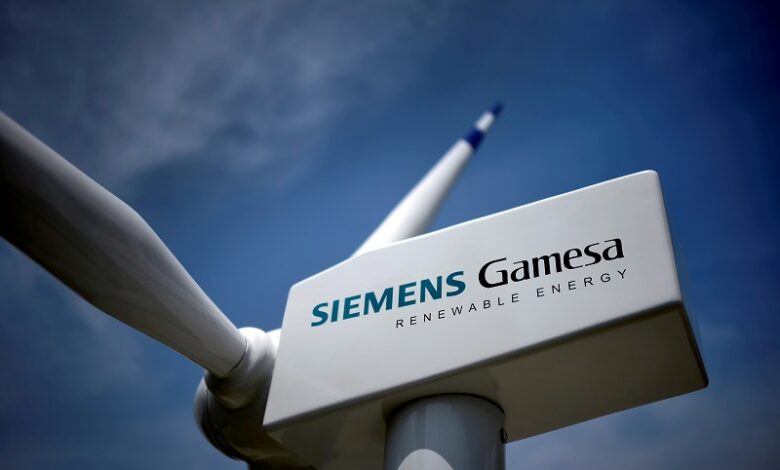Wind Energy Industry Faces Headwinds as Major Player Siemens Energy Loses Billions in Market Value

Edited By Agnibeena Ghosh
Siemens Energy, one of the world’s largest wind turbine manufacturers, recently sent shockwaves through the renewable energy sector as it grappled with significant financial losses. The company, which owns turbine manufacturer Siemens Gamesa, saw its shares plummet after revealing it was in discussions with the German government to secure €15 billion in guarantees to stabilize its balance sheet. These woes come as Siemens Energy expects substantial losses this year, primarily due to faults found in its latest turbine models.
Claudia Kemfert, an energy expert at the German Institute of Economic Research in Berlin, acknowledged the challenges facing Siemens Energy but emphasized that they do not reflect the overall health of the wind industry. She stated, “Wind power is literally on the rise globally. The problems at Siemens Gamesa are homemade. The group must get a grip on quality problems. The fact that this has not been done to a sufficient degree to date is astonishing and must be changed.”
However, there are growing concerns that a broader trend is emerging within the industry. The increasing costs associated with financing and building wind farms are creating headwinds for developers of offshore wind projects worldwide. Inflation is casting doubt on the feasibility of multibillion-pound wind initiatives. Over time, these industry-wide cost pressures may pose a threat to government renewable energy targets.
One such example of escalating costs impacting a major project is Sweden’s Vattenfall. The company raised concerns this summer and temporarily halted work on its colossal offshore wind farm off the Norfolk coast known as Norfolk Boreas. Initially designed to provide electricity to approximately 1.5 million British homes, the project faced a 40% increase in costs, largely attributed to rising energy and material prices, making it financially unviable. Vattenfall had previously secured a government support contract for the project at a record low price of £37.35 per megawatt hour (MWh). However, due to the surge in global energy prices, the company now requires a “significantly higher” subsidy for the project to remain economically viable.
Alongside energy giants SSE and ScottishPower, Vattenfall alerted the UK government to the insufficient subsidy contracts awarded in a late summer auction. The companies argued that the starting price in the auction was too low to cover project costs. Despite these concerns, the government proceeded with the auction at the originally proposed price, leading to a lack of new offshore wind farm projects bidding for contracts.
The Danish wind farm leader, Ørsted, also faced its share of challenges. The company expressed concerns regarding supply chain disruptions and the impact of soaring interest rates. Ørsted informed investors about a near £2 billion writedown, citing delays in several wind farm projects in the United States.
These developments collectively underscore the growing challenges within the wind energy sector, particularly for offshore projects. As renewable energy targets become more ambitious worldwide, it is imperative for industry players to address issues related to cost overruns, quality control, and supply chain disruptions.
While the wind industry is indeed on the rise globally, its future success depends on sustainable and cost-effective development. As inflation and other economic factors continue to influence the financial feasibility of projects, it is crucial for governments, corporations, and investors to work together to ensure that wind energy remains a viable and environmentally responsible solution for our energy needs. By addressing these headwinds and implementing innovative solutions, the wind energy industry can continue its upward trajectory and contribute significantly to a cleaner and more sustainable future.
News Mania Desk / Agnibeena Ghosh 31st October 2023






